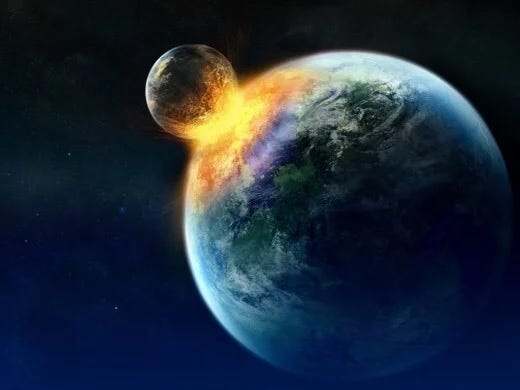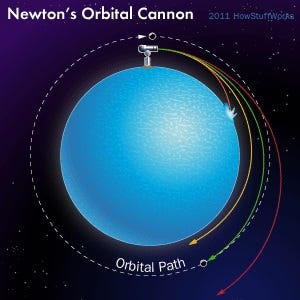Why Doesn't the Moon Descend to Earth? A Scientific Exploration
Written on
Chapter 1: Understanding the Moon's Orbit
The question of why the Moon doesn’t plummet to Earth is a popular topic on my Ukrainian YouTube channel. There are two primary explanations for this intriguing phenomenon: one grounded in classical Newtonian mechanics and the other in the theory of relativity. In this article, I will focus on the classical mechanics perspective, as it is more accessible for those who may not have a scientific background.
The initial explanation originates from Sir Isaac Newton, the father of classical mechanics. To illustrate this concept, let’s envision a thought experiment that Newton himself proposed.

Imagine we are positioned atop a tall mountain, firing a cannon capable of launching cannonballs at extremely high speeds. If we fire the cannon directly parallel to the Earth's surface and steadily increase the cannonball's velocity, we can visualize the results.
For instance, after the first shot, the cannonball might travel 10 kilometers. The second shot could reach 20 kilometers, the third 30 kilometers, and so forth. If the Earth were flat, the distance traveled by the cannonball would correspond directly to the force exerted. However, as the distance increases, the curvature of the Earth becomes significant, causing the projectile's range to extend more rapidly than the applied force. If the cannonball achieves a sufficient initial velocity, it will not hit the ground; instead, its descent will perfectly match the Earth's curvature.

In essence, the projectile would continuously circle the Earth without ever landing on it. It would appear as if the Earth is moving away beneath it, leading to an orbital motion around the planet. The required launch speed for a projectile to maintain this orbit without descending is known as the first cosmic velocity, which is approximately 7.91 km/sec near the Earth's surface.
Now, let's relate this to the Moon. The Moon doesn’t fall towards Earth for a similar reason: it travels in an orbit due to its velocity. To clarify, the Moon is perpetually falling toward Earth, but because of the Earth’s curvature, it consistently misses it.
If you're interested in more articles about space, feel free to clap! Subscribe to our channel and share your questions, which I will address in future discussions.